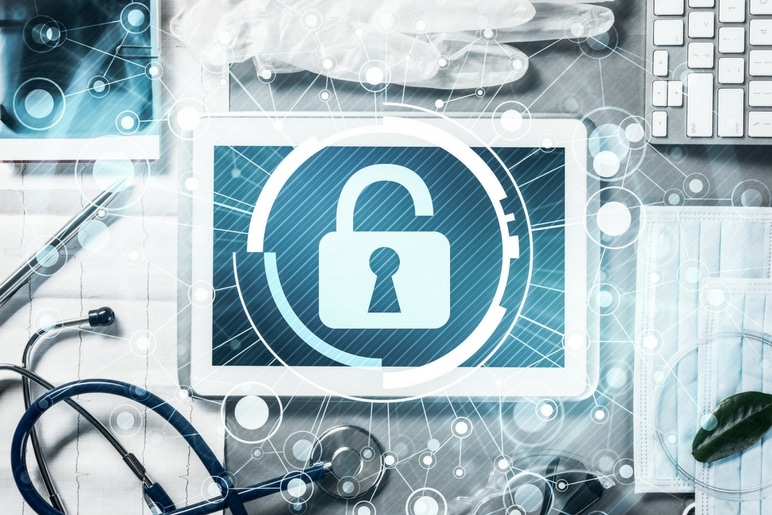Device fingerprinting is a powerful technology that enhances online security by creating a unique identifier for each device. This process involves collecting various attributes of a device, such as its operating system, browser version, installed plugins, and even screen resolution, to form a digital fingerprint that can distinguish it from others. This technology offers several benefits in bolstering online security, making it an essential tool for modern cybersecurity strategies.
Enhanced Fraud Detection and Prevention
One of the primary advantages of device fingerprinting is its ability to detect and prevent fraudulent activities. Traditional security measures, such as passwords and two-factor authentication, can be compromised. Device fingerprinting adds an extra layer of security by tracking the unique characteristics of a device. For instance, if a banking app detects an unusual device fingerprint trying to access an account, it can trigger additional verification steps. This helps in identifying and blocking potential fraudsters before they can cause harm.
Improved Account Security
Device fingerprinting significantly enhances account security by preventing unauthorized access. Unlike traditional methods that rely on user credentials, which can be stolen or guessed, device fingerprints are much harder to replicate. Each device’s fingerprint is unique and changes infrequently, making it a reliable indicator of authenticity. This technology is particularly useful for high-security environments where protecting sensitive information is crucial. It helps ensure that only legitimate devices can access an account, reducing the risk of unauthorized access.

Reduction in Account Takeovers
Account takeovers are a growing concern, where attackers gain control of a user’s account and potentially misuse it. Device fingerprinting helps mitigate this risk by monitoring changes in device attributes. If an account is accessed from a device with a different fingerprint than usual, security systems can flag this as suspicious. This proactive approach allows for immediate intervention, such as requiring additional verification steps or locking the account until the legitimacy of the access can be confirmed.
Enhanced User Experience
While device fingerprinting strengthens security, it also improves the user experience. By recognizing a device based on its fingerprint, websites and applications can streamline the login process. Users do not need to repeatedly enter verification codes or answer security questions if their device is already known and trusted. This seamless experience not only enhances convenience but also encourages users to engage more with digital platforms, knowing their accounts are secure.
Better Detection of Anomalies and Threats
Device fingerprinting provides valuable insights into device behavior, allowing for the early detection of anomalies and potential threats. For example, if a device fingerprint suddenly changes, it may indicate a possible malware infection or a new device being used. Security systems can then investigate further and take appropriate action, such as running security scans or alerting the user. This proactive threat detection helps in maintaining a secure online environment by addressing issues before they escalate and verify device fingerprint result.
Device fingerprinting is a robust tool in the arsenal of online security measures. Its ability to enhance fraud detection, improve account security, and provide a better user experience makes it a valuable technology for protecting digital assets and ensuring a secure online environment. As cyber threats continue to evolve, device fingerprinting will play a crucial role in defending against emerging risks and maintaining user trust.
As we connect to various online services, it is crucial to ensure that our personal information, communications, and browsing activities remain private and protected from prying eyes. One solution to this growing concern is the use of encrypted tunnels, which allow users to navigate the internet without fear of being tracked, monitored, or hacked. These encrypted tunnels work by masking the user’s online activity and encrypting all the data transferred over the internet, making it nearly impossible for anyone, including cybercriminals and governments, to access or manipulate the information. The concept behind secure encrypted tunnels is simple but highly effective. When you connect to the internet using an encrypted tunnel, your data is sent through a secure pathway that is shielded from external threats. This tunnel essentially acts as a private passage between you and your destination online, protecting your data from the risks of surveillance, hacking, or interception. By encrypting the data before it leaves your device, it becomes unreadable to anyone who might try to steal it during its journey through the web.
One of the key benefits of using these encrypted tunnels is the enhanced privacy they provide. In an age where personal data is constantly being harvested and sold, the ability to navigate the internet without fear of surveillance is more important than ever. Whether you are browsing social media, shopping online, or even just reading the news, you can rest assured that your activities are shielded from third-party tracking systems. Additionally, encrypted tunnels can also bypass geo-restrictions, enabling you to access content that might otherwise be blocked in your location. Security is another major advantage. With cybercrime becoming more sophisticated, securing sensitive data is essential for protecting yourself from identity theft, financial fraud, and other malicious activities. Nexus link encrypted tunnels provide a strong defense against hackers by ensuring that your data is unreadable even if it is intercepted. This is particularly important for individuals who rely on public Wi-Fi networks, which are notorious for their vulnerabilities.
By using encrypted tunnels, you can safely use Wi-Fi networks without worrying about hackers snooping on your activities. Another often overlooked benefit of encrypted tunnels is their ability to prevent censorship. In some countries, governments impose strict controls on internet access, limiting the websites and services their citizens can access. Encrypted tunnels enable users to bypass such restrictions, allowing them to freely access information and communicate with others without fear of censorship or government surveillance. In conclusion, the use of encrypted tunnels is an essential tool for anyone looking to navigate the internet securely and privately. By providing robust protection against cybercriminals, government surveillance, and censorship, these secure tunnels offer peace of mind and the freedom to explore the online world without fear. Whether for personal use or professional purposes, ensuring your online activities are protected has never been more important.
The need for secure communication and the protection of private data has led to the rise of various encryption technologies and privacy-oriented networks. One such network is the Darknet, which offers users a layer of anonymity and security for their online activities. Among the most renowned services in this arena is Mega Darknet, a platform that provides robust solutions to protect users’ secrets in the vast digital realm. Mega Darknet is a specialized network that prioritizes privacy and security above all else. Unlike the surface web, which is easily accessible and monitored by various entities, the Darknet offers users the ability to communicate and access information in relative obscurity. The key aspect of Mega Darknet is its use of advanced encryption technologies, ensuring that any data exchanged or stored within its domain remains inaccessible to unauthorized parties. This makes it an ideal space for individuals who are concerned about the potential for government surveillance, corporate data harvesting, or malicious hacking attempts.

What sets Mega Darknet apart from other privacy networks is its commitment to safeguarding not only the communication between users but also the content they share. Whether it is files, messages, or personal information, Mega Darknet ensures that all data is encrypted end-to-end. This means that even if someone intercepts the transmission, they would be unable to decipher the information. Furthermore, Mega Darknet’s decentralized architecture ensures that no central authority or server can access or control the data. This reduces the risk of mass data collection and central points of failure, which are common vulnerabilities in traditional online networks. Moreover, Mega Darknet offers a level of anonymity that is unmatched by most other online services. The use of Tor The Onion Router and similar technologies ensures those users’ IP addresses are masked, making it incredibly difficult for anyone to trace their online activity back to them. This is particularly important for individuals who require a high degree of privacy, such as journalists, activists, or whistleblowers, who often find themselves at odds with governments or other powerful entities.
One of the most compelling features of Mega Darknet is its ability to store sensitive data securely without compromising on accessibility. Users can upload encrypted files, ensuring that only those with the proper decryption keys can access the information. This level of control over personal data makes it an invaluable resource for anyone looking to keep their secrets safe in the digital world. While the Darknet is often associated with illicit activities, Mega darknet takes a firm stance against illegal content. Its administrators actively monitor and enforce policies to maintain a safe and legal environment for all users. This allows individuals to enjoy the privacy benefits of the Darknet without fear of encountering harmful or illegal content. In conclusion, Mega Darknet provides an essential service for those seeking privacy and security in a world where digital threats are ever-present. Its combination of encryption, decentralization, and anonymity ensures that users can protect their secrets while navigating the digital realm safely. For anyone concerned about the vulnerabilities of modern online platforms, Mega Darknet offers a safe harbor where privacy is not just a feature but a core principle.